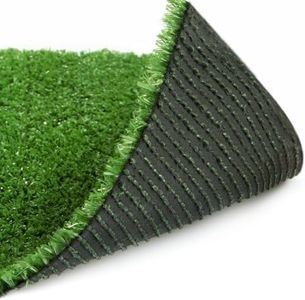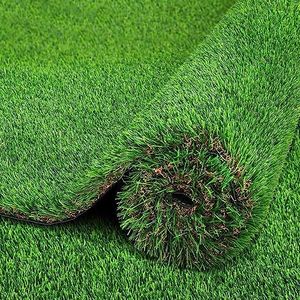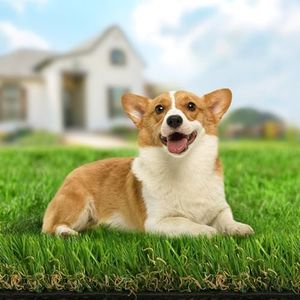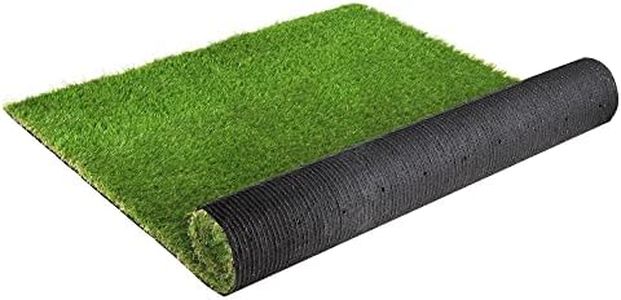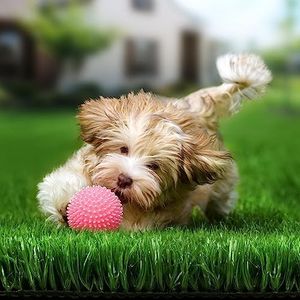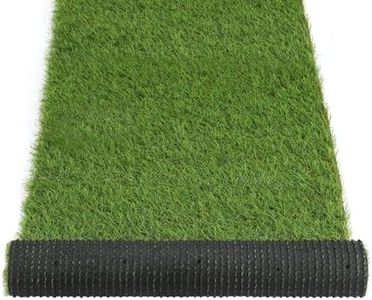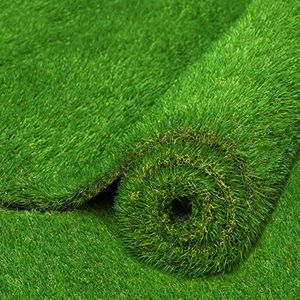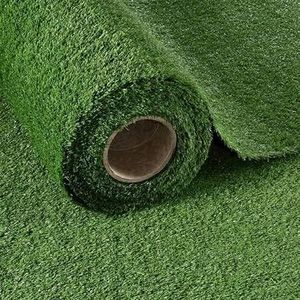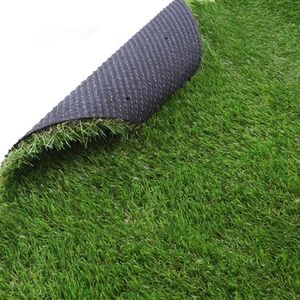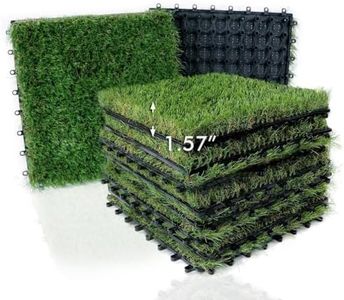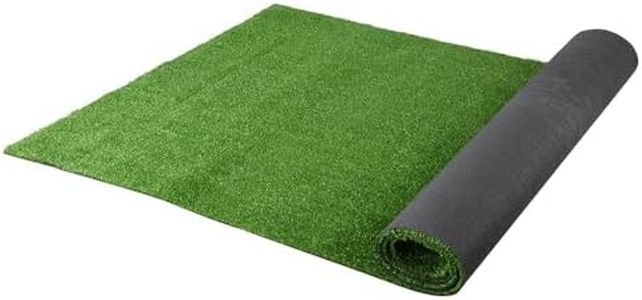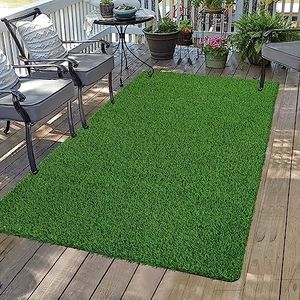We Use CookiesWe use cookies to enhance the security, performance,
functionality and for analytical and promotional activities. By continuing to browse this site you
are agreeing to our privacy policy
10 Best Artificial Grass
From leading brands and best sellers available on the web.Buying Guide for the Best Artificial Grass
Choosing artificial grass is a smart way to simplify yard maintenance and keep your outdoor spaces looking green year-round. The best way to pick artificial grass is to consider how and where you’ll use it, the look and feel you want, and the level of durability you need. Since artificial grass comes in different thicknesses, colors, and textures, understanding what each feature means will help you find what works best for your space and usage.Pile HeightPile height refers to how tall the grass blades are. This is important because it affects both the look and feel of your artificial grass. Shorter pile heights, usually under 25mm, are easier to keep clean and better for areas with heavy traffic, like playgrounds or pet runs. Medium pile heights, around 25mm to 35mm, provide a balance between durability and a more natural feel, making them good for most lawns. Taller pile heights, over 35mm, look lush and realistic but may flatten faster if there’s lots of use. Pick a pile height based on whether you want easy maintenance, a natural look, or softness underfoot.
DensityDensity refers to how tightly packed the synthetic grass fibers are. Denser grass is more durable, feels fuller, and looks more authentic, which is ideal for lawns or display areas that are meant to mimic real grass closely. Lower-density grass can be lighter and less expensive but may look sparse with the ground showing through, which is less desirable for places people will see or spend time on. If your area will see a lot of foot traffic or aesthetics are important, aim for denser artificial grass.
Color and ShadeArtificial grass comes in various shades of green and sometimes includes hints of brown to appear more natural. Choosing the right color is important for how realistic your lawn will look next to your real plants or surroundings. Lighter greens can look fresh but may appear unnatural in some settings, while darker greens or those with brown flecks tend to blend better with most landscapes. To pick the right one, consider the climate and the type of greenery common around your area, or get samples to compare how they look at home.
Backing MaterialThe backing is what holds the grass blades together and provides structure to the mat. There are different types, like polyurethane or latex backing, and the quality affects the grass’s longevity and drainage. A strong, well-constructed backing resists wear and holds up better over time, especially with heavy use. Additionally, good backing should allow water to drain through easily to avoid puddles or mold. If the grass is for pets or rainy climates, superior drainage is essential.
UV ProtectionArtificial grass is often exposed to direct sunlight, which can make it fade or become brittle. UV protection is built into many modern products, guarding against sun damage. This is important if you want your lawn to keep its color and structure over the years. If your grass will be placed in a sunny area, make sure it’s labeled as UV-resistant to ensure it keeps looking good longer.
Feel and TextureThe way artificial grass feels underfoot depends on the material and how soft or firm the fibers are. Some grass is made with softer blades, making it more comfortable for barefoot activities or play, while others are firmer and designed to be more resilient for sports or pets. It’s helpful to touch samples in person before deciding so you can pick something that matches your comfort preferences and how you plan to use the space.
